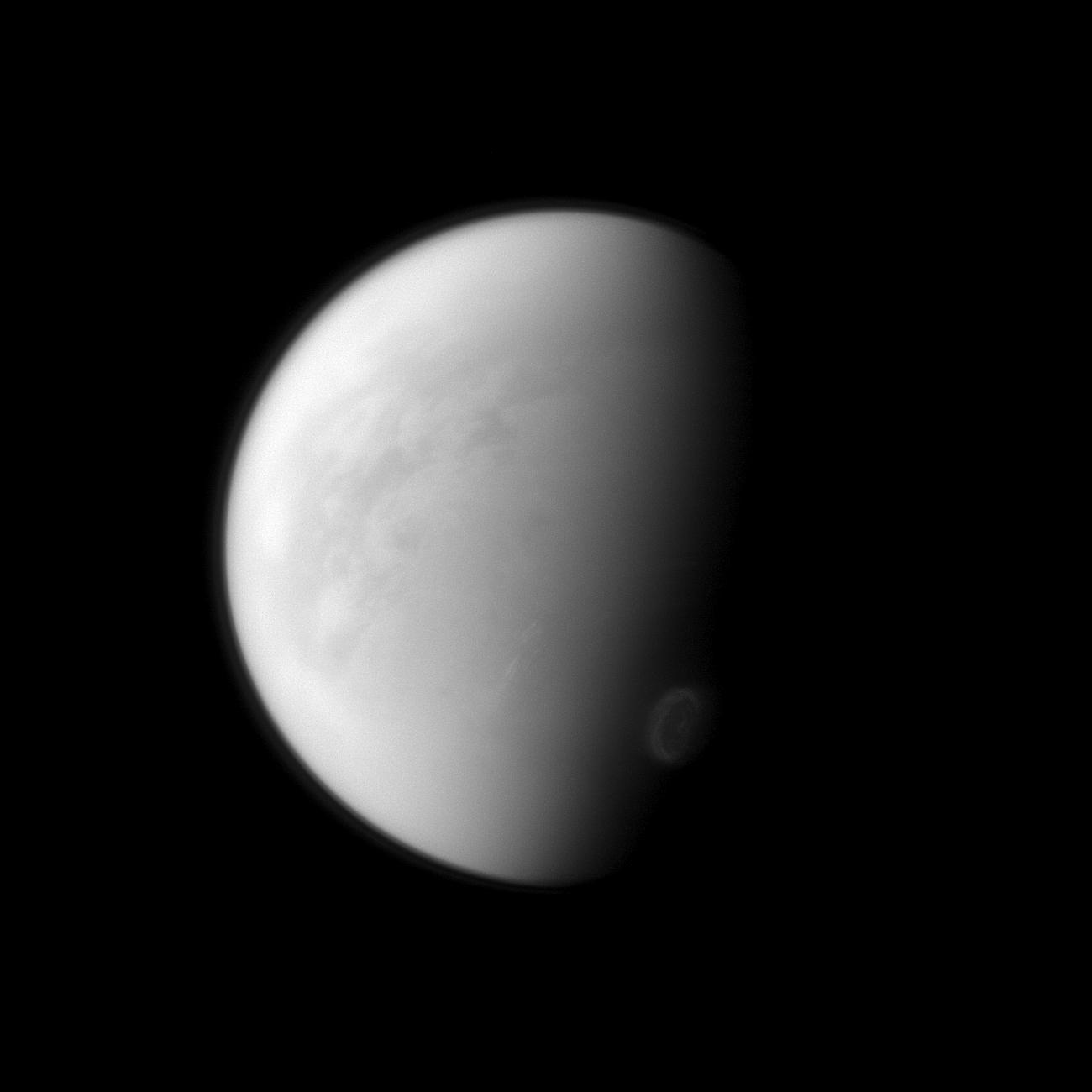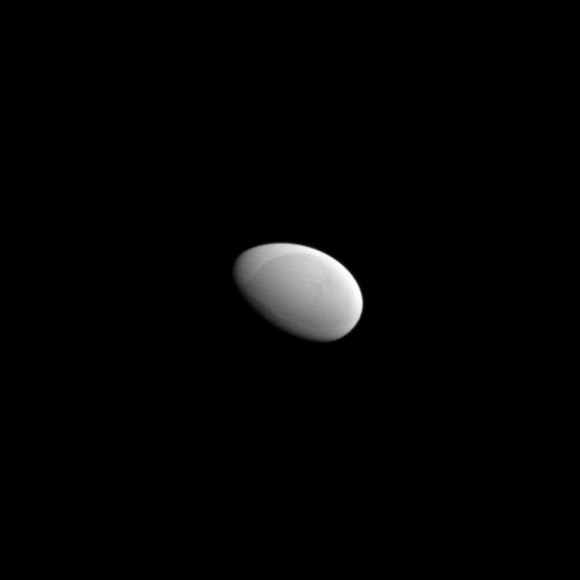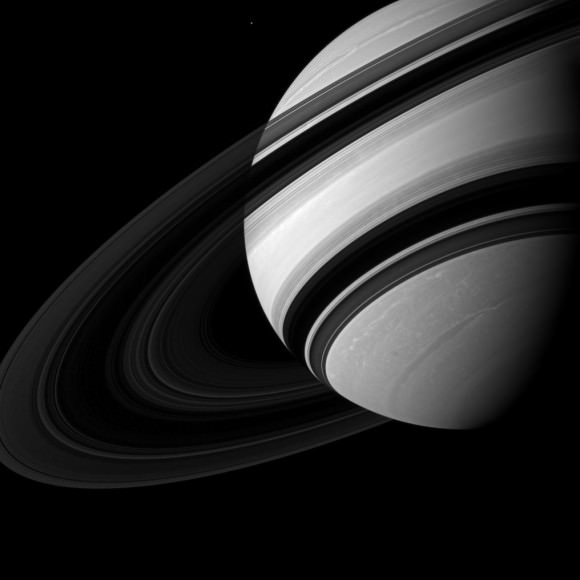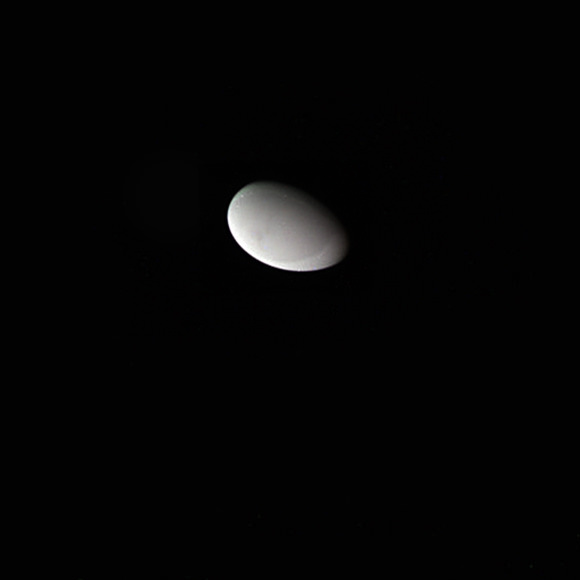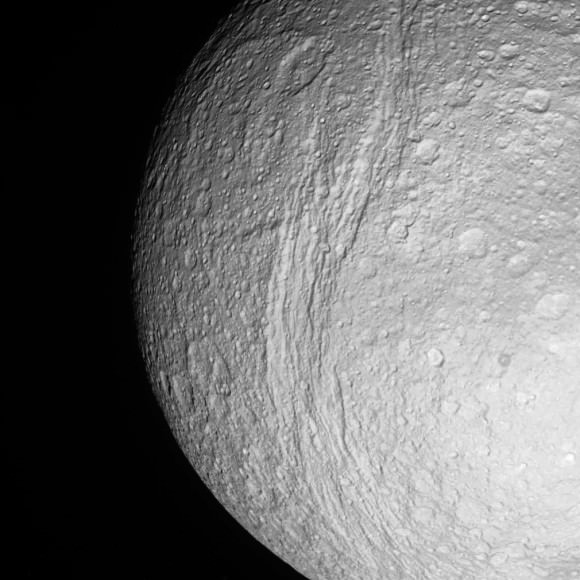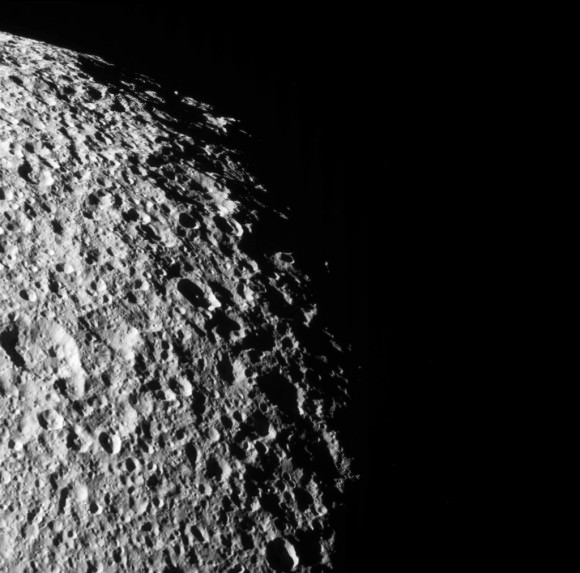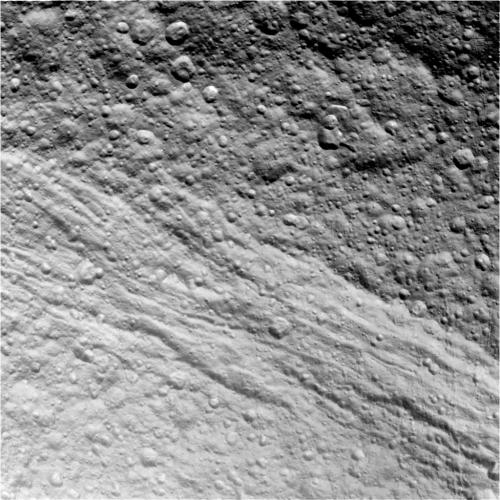High-altitude clouds in Titan’s seasonal south polar swirl glow dimly in this image from NASA’s Cassini spacecraft.
With wild storms and a vast ring system, nothing seems small around Saturn. But as NASA’s Cassini spacecraft loops high over Saturn’s poles, scientists are taking time to explore the little things including a swirling vortex, the miniature moon Mimas, and another tiny ovoid moon named Methone.
Titan’s swirling vortex, lower right, glows brightly against the south polar clouds in this new image from NASA’s Cassini spacecraft. Scientists are monitoring the development of the swirling mass of gas to try and understand the weather related to the coming winter to the moon’s south pole. For a color closeup of the vortex, see Titan’s Colorful South Polar Vortex. If you’re more into a moving visualization, check out the vortex in motion.
Cassini acquired the view of the vortex on Titan on August 31, 2012 using a special filter sensitive to light in the near-infrared. Cassini took this image from a distance of about 1.2 million kilometers (750,000 miles) above the south pole of Titan. That’s nearly three times the distance between Earth and the Moon. The smallest detail on this image is about 4 miles across.
“Note the motions and beautifully detailed cloud patterns,” wrote Carolyn Porco, Cassini imaging team lead on the CICLOPS website, “very likely the result of open-cell convection — already visible in this fascinating phenomenon that we on Cassini have been fortunate to capture, for the first time, in the process of being born.”
Methone looks like a tiny gray egg in this image from NASA’s Cassini spacecraft.
Last week, the Cassini imaging team released two stunning images of Saturn. Tiny, egg-shaped Methone (pronounced meh-tho-nee) is barely 3 kilometers (2 miles) across. Cassini discovered this moon in 2004 hanging out between Mimas and Enceladus at just 194,000 km (120,000 miles) above Saturn. From Methone’s smooth surface, Saturn must be a true wonder. Small moons like Methone are generally non-round. Scientists believe they just don’t have the mass to pull themselves together into a round shape. The leading side of Methone is lit in this image and at a distance of just 4,000 km (2,500 miles) the smallest feature that can be seen is about 27 meters (88 feet).
Saturn’s moon Mimas is dwarfed by Saturn and its rings in this spectacular image from NASA’s Cassini spacecraft
Don’t blink or you might miss a tiny dot just to the upper left of Saturn. Mimas is dwarfed not only by Saturn’s rings, but also by the gigantic storms visible in the northern and southern hemisphere’s Mimas is just 396 km (246 miles) across and is the solar system’s 20th largest satellite. The moon could easily fit within the borders of Spain and most western states in the U.S. Cassini took this spectacular image from a distance of 2.4 million kilometers (1.5 million miles) from Saturn.
Source: NASA Jet Propulsion Laboratory and Cassini Imaging Central Laboratory for Operations (CICLOPS)

